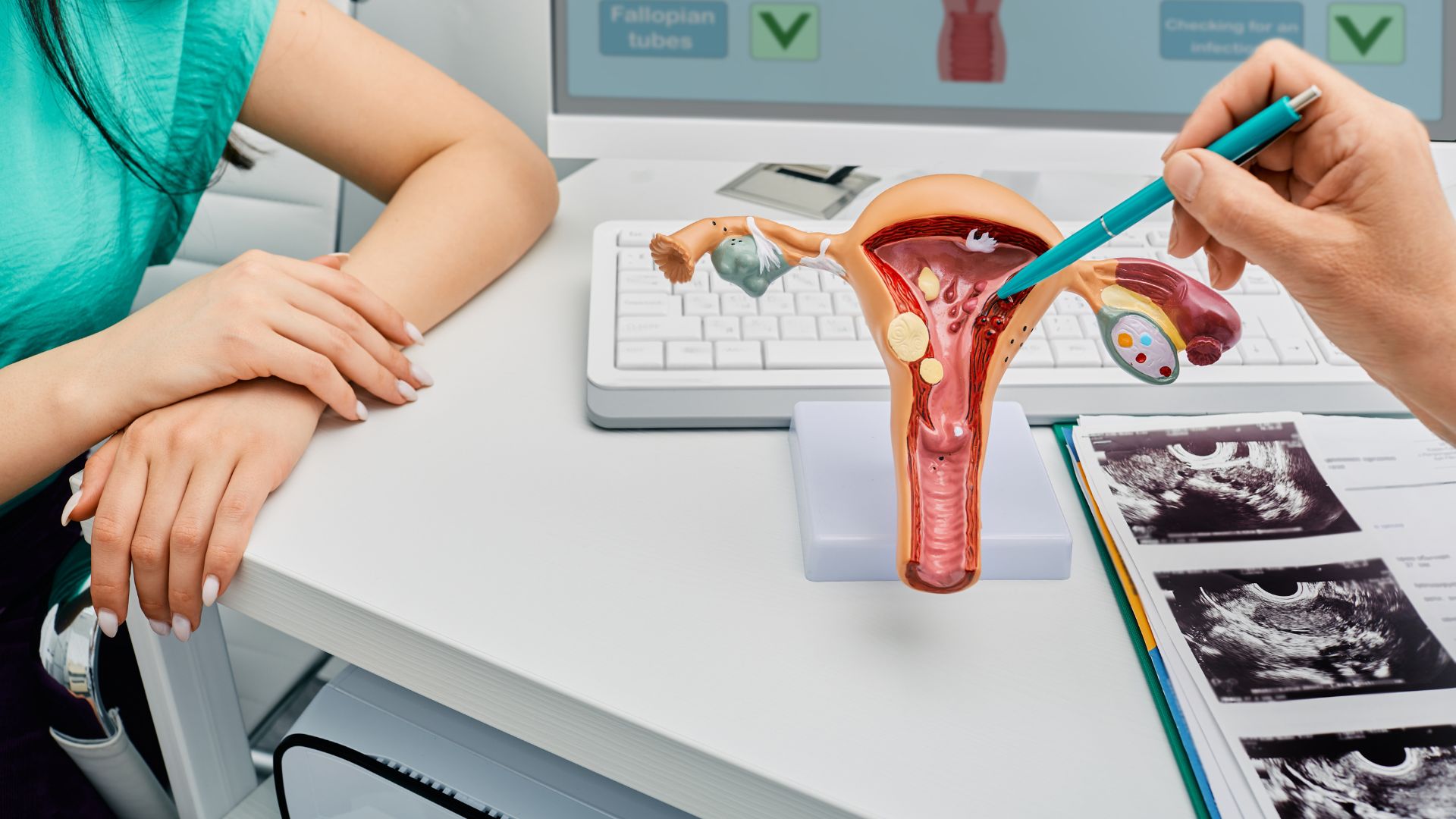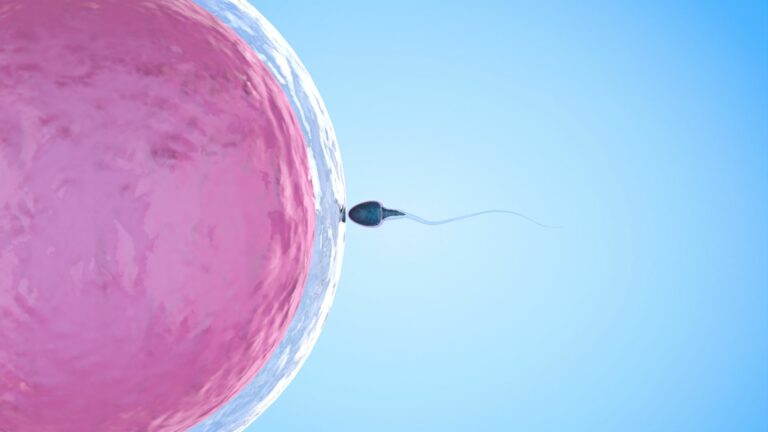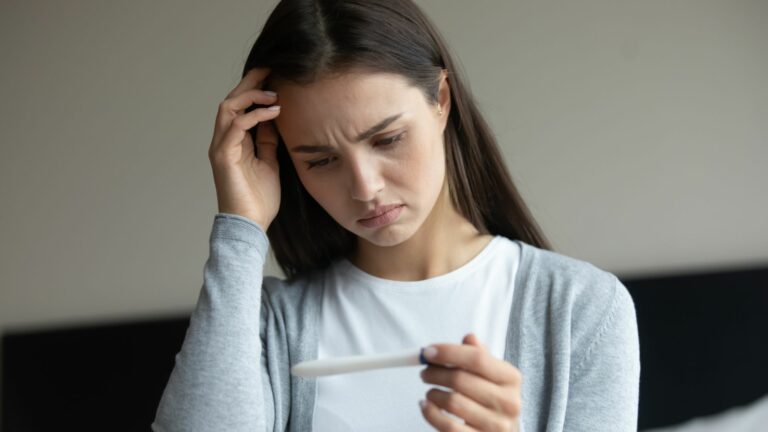
Introduction
Infertility is an issue that plagues many, affecting both emotional wellbeing and family dynamics.
Among various factors contributing to infertility, uterine polyps are significant, especially in older women of reproductive age who are exploring the possibilities of In Vitro Fertilization (IVF).
This common uterine condition can undermine the effectiveness of IVF due to the creation of a less-than-ideal environment for embryo implantation.
In India, where IVF is increasingly becoming a preferred solution for infertility, managing uterine polyps effectively before IVF is paramount for enhancing the chances of success.
Key Takeaways
| Aspect | Detail |
|---|---|
| Relevance of Polyps in IVF | High |
| Common Age Group | 32-50 years |
| Symptoms Impacting IVF | Irregular bleeding, Implantation failure |
| Diagnostic Importance | Essential for planning successful IVF |
| Treatment Recommendation | Often involves hysteroscopic removal |
Awareness about the effects of even small polyps on IVF outcomes is on the rise in India. As knowledge grows, more couples and individuals insist on comprehensive pre-IVF assessments to optimize their chances of attaining parenthood.
Understanding the connection between IVF and uterine polyps will arm participants with the necessary information to make informed decisions about their reproductive health.
Learn more about what IVF involves and why it’s considered a viable option for many.
Why Focus on Uterine Polyps?
Uterine polyps are one of the most frequently discovered abnormalities in women experiencing infertility. They are benign growths that emerge from the inner lining of the uterus— the endometrium.
Polyps vary in size and can grow as small solitary formations or as multiple clusters. The majority of uterine polyps are non-cancerous, but their presence is problematic for women undergoing IVF for several reasons:
- Physical Barrier: Polyps can physically block the implantation site in the uterus, preventing the embryo from nesting.
- Endometrial Disruption: They can cause inflammation and alter the normal hormonal milieu necessary for sustaining an embryo.
- Bleeding and Infection Risk: Polyps can also cause irregular bleeding which might lead to increased infection risks post embryo transfer.
For couples considering IVF, understanding these risks and addressing them through proper medical channels is essential.
While the IVF process is comprehensive, the preparatory phase that considers the removal of uterine polyps is vital.
Growing Awareness in India
With the increasing accessibility and affordability of IVF, more individuals in India are becoming proactive about addressing potential hindrances like uterine polyps.
The establishment and success rates of embryos can dramatically improve with the removal of polyps, as demonstrated in various studies linked to hysteroscopy outcomes.
The cultural shift towards more advanced reproductive technologies has led to a surge in awareness programs and IVF support groups across the country providing guidance and shared experiences to assist individuals on their fertility journey.
Understanding Uterine Polyps in the IVF Context
What are Uterine Polyps?
Uterine polyps, also known as endometrial polyps, are benign (non-cancerous) growths that attach themselves to the inner wall of the uterus and protrude into the uterine cavity.
Arising from the hormone-responsive lining of the uterus, called the endometrium, these polyps vary in size and can be as minute as a sesame seed or as large as a golf ball.
They generally affect women during their reproductive years but can occur at any age.
Types of Uterine Polyps
There are mainly two types:
- Endometrial Polyps: Most common, originating from the endometrial lining.
- Cervical Polyps: Less common, arising from the cervical canal.
Symptoms of Uterine Polyps
Many women with uterine polyps do not experience any symptoms and may only discover their presence during a routine check-up.
However, some common symptoms include:
- Irregular Menstrual Bleeding: Including unusually heavy or prolonged periods.
- Spotting Between Periods: Occasional bleeding between menstrual cycles.
- Infertility or Subfertility: Difficulty in conceiving, often related to larger or multiple polyps which can interfere with the implantation of an embryo.
Diagnosis of Uterine Polyps
Transvaginal Ultrasound (TVS): A primary diagnostic tool, TVS involves the insertion of a small ultrasound probe into the vagina to get a clear image of the uterus and detect the presence of polyps.
While highly effective, its sensitivity can be limited by the operator’s experience and the size of the polyp.
Hysteroscopy: This is considered the gold standard for diagnosing and removing uterine polyps.
A hysteroscope, a thin, lighted telescope, is inserted into the uterus through the cervix, enabling the physician to see and remove the polyps in the same procedure, ensuring a precise and comprehensive treatment.
Learn more about preparing for IVF with hysteroscopy.
In India, advancements in diagnostic technologies and increasing expertise among healthcare providers have made these procedures more accessible and effective, helping countless women improve their chances of a successful IVF cycle.
Moreover, understanding these options helps patients make informed decisions about their fertility treatments.
Impact of Polyps on IVF Success
The presence of uterine polyps is particularly concerning for individuals undergoing IVF because they can significantly impact the success rates by:
- Creating a Physical Barrier: Blocking the implantation of the embryo.
- Causing Inflammation: Which can unfavorably alter the uterine environment.
- Disrupting Hormonal Function: Necessary for embryo development and implantation.
These factors underscore the need for thorough pre-IVF evaluation and treatment of any uterine abnormalities.
Managing uterine polyps can be a critical step in enhancing the outcome of IVF treatments, particularly when considering the high stakes of emotional and financial investment involved in each cycle.
Educating about the significance of these issues has led to better-prepared IVF candidates in India, benefiting from the wealth of information available through resources such as the National Health Portal of India and localized IVF clinics that can be explored further based on geographic preference like IVF centers in Rajkot or IVF centers in Vasai-Virar.
Diagnosis of Uterine Polyps for IVF Patients in India
Early Detection is Key
The successful management of uterine polyps begins with early detection, especially crucial for women preparing for IVF treatment.
Accurate diagnosis not only enables targeted treatment but also helps in planning the most effective IVF strategy to enhance the likelihood of pregnancy.
Diagnostic Methods
The diagnostic approach to uterine polyps typically involves:
1. Transvaginal Ultrasound (TVS):
- Procedure: Involves using a probe inserted into the vagina to produce sonic images of the uterus.
- Benefits: Non-invasive, quick, and provides essential details about the uterus and potential polyps.
- Limitations: Smaller polyps might escape detection, or not all features of the polyps may be discernable.
With the growing number of IVF centers across India, access to advanced ultrasound technology has become increasingly widespread, allowing for greater precision in preliminary diagnostics.
2. Hysteroscopy:
- Procedure: Involves inserting a hysteroscope through the cervix to view the inside of the uterus directly.
- Benefits: Allows not only for diagnosis but also for the simultaneous removal of polyps, offering a clear path to a healthier uterine environment for IVF.
- Considerations: More invasive than TVS and typically requires anesthesia; however, it’s highly recommended for definitive diagnosis and treatment.
Learn more about the benefits of hysteroscopy in the IVF preparation process through this detailed guide on hysteroscopy before IVF outcomes.
Making an Informed Decision
Choosing the right diagnostic method depends on several factors, including the presence and severity of symptoms, the woman’s medical history, previous fertility treatments, and access to medical facilities. It’s important for patients to:
- Discuss all options with their fertility specialist, understanding the pros, cons, and implications of each method.
- Consider logistical factors such as the availability of medical providers experienced in hysteroscopy.
- Evaluate costs associated with each procedure, especially since IVF costs can be substantial and are a major consideration for many couples in India. Potential costs can be reviewed on IVF cost in India.
Additional Considerations
- Timing: The timing of the diagnostic procedures should align with the woman’s menstrual cycle and IVF schedule to optimize the chances of successful treatment.
- Follow-up: Post-diagnosis, a clear follow-up strategy should be established to assess the results of the polypectomy and the readiness of the uterus for IVF.
Finding a Reputable Facility
Choosing the right clinic is crucial for successful diagnosis and treatment. Resources such as finding an IVF doctor in India and choosing the best IVF clinic can help in making an informed choice based on the clinic’s reputation, technology standard, and the expertise of medical staff.
Managing Uterine Polyps Before IVF
The next part will focus on the treatment strategies, particularly hysteroscopic polypectomy, detailing the procedure, benefits, preparation, recovery, and how it integrates into the broader IVF treatment plan.
When is Polypectomy Recommended?
In the context of IVF, the decision to proceed with polypectomy—surgical removal of uterine polyps—is critical and is generally influenced by several factors:
- Size and Number of Polyps: Larger or multiple polyps more significantly impact fertility and are usually recommended for removal.
- Location of Polyps: Polyps located in areas critical for implantation, such as the fundus of the uterus, need to be removed to enhance the chances of embryo attachment.
- Symptoms and Recurrence: Frequent symptoms like abnormal bleeding or previous instances of polyps might also dictate the need for this procedure.
Hysteroscopic Polypectomy: The Gold Standard
Regarded as the most effective method for the removal of uterine polyps, hysteroscopic polypectomy is a minimally invasive procedure that plays a significant role in pre-IVF preparations:
- Procedure Overview: A hysteroscope equipped with a camera and surgical tools is inserted into the uterus through the cervix. This allows direct visualization and precise removal of polyps.
- Benefits: Outpatient procedure with minimal recovery time, reduced risk of complications, and generally does not require incisions.
- Anesthesia: Can be performed under local, regional, or general anesthesia, depending on the extent of the procedure and patient comfort.
Explore more about how polypectomy could influence IVF success on hysteroscopy before IVF outcomes.
Recovery and Next Steps:
After a hysteroscopic polypectomy, most patients can return home the same day and resume normal activities shortly thereafter.
Specific post-procedure guidelines include:
- Activity Restraints: Avoid strenuous activities and heavy lifting for a few days to allow the cervix to heal properly.
- Monitoring Symptoms: Pay attention to any signs of infection or complications, such as fever, severe abdominal pain, or heavy bleeding.
- Follow-up Visits: Typically, a follow-up appointment is scheduled within a week or two post-procedure to ensure proper healing and discuss the upcoming IVF strategy.
A Patient’s Guide to Polypectomy Before IVF:
- Understanding the Procedure: It’s important for patients to fully understand what the polypectomy entails, why it’s necessary, and what risks or complications could arise.
- Pre-operative Preparation: Patients may need to undergo pre-operative assessments such as blood tests or an additional ultrasound. They should also follow specific instructions regarding fasting or medication adjustments.
- Post-operative Care: Adhering to the doctor’s instructions post-surgery ensures a smooth recovery and optimal results for IVF readiness.
Discuss these considerations with your fertility specialist or consult resources like IVF FAQs in India for more detailed information.
Additional Considerations
- Cost Implications: While IVF itself is a significant investment, adding a polypectomy could further impact the financial planning of the couple. Understanding all related costs, potentially explored further on IVF cost in India, is essential.
- Emotional Support: Undergoing fertility treatments can be emotionally demanding. Engaging with IVF support groups can provide emotional respite and valuable insights from those undergoing similar experiences.
Impact of Uterine Polyps on IVF Outcomes in India
Understanding the connection between uterine polyps and IVF outcomes is pivotal for anyone going through or considering IVF treatments.
The presence of polyps can influence the success rates considerably due to several mechanisms outlined below:
Reduced Implantation Rates
Uterine polyps create a physical obstruction within the uterine cavity, which can interfere with the implantation of the embryo.
Their presence can also lead to a suboptimal endometrial environment which is less conducive to embryo attachment and growth.
Inflammation and Disruption
Polyps may cause inflammatory responses in the uterus which can unfavorably affect the endometrial receptivity to an embryo.
This environment can disrupt the normal signaling necessary for successful implantation and early development of the pregnancy.
The Research and Evidence
Several studies have demonstrated that the removal of uterine polyps can improve IVF outcomes, particularly in patients who have experienced recurrent IVF failures.
A clear correlation has been observed between polypectomy and increased rates of implantation and clinical pregnancy, emphasizing the significance of addressing this issue promptly.
For more detailed insights, consider exploring preimplantation genetic screening as a complement to optimizing IVF success post-polypectomy.
Personalized Treatment Approaches
Given the impact of uterine polyps, it’s essential for treatment approaches to be personalized:
- Screening and Diagnosis: Integrating a routine screening for polyps in patients undergoing IVF can help identify issues before they compromise outcomes.
- Customized Polyp Management: Depending on individual factors such as the number, size, and location of polyps, a tailored plan for removal can be developed.
- Ongoing Monitoring: Continued surveillance post-polypectomy can help in detecting any recurrence quickly and addressing it effectively.
Knowing more about successful IVF strategies and the impact of interventions like polypectomy can potentially boost success rates, as referenced in resources regarding IVF success rates.
Additional Considerations
- Geographical Variations: Access to advanced IVF and surgical techniques can vary across different regions in India, potentially affecting the outcomes. Patients in cities like Varanasi and Srinagar may need to consider logistical elements when planning their treatment.
- Emotional and Psychological Support: The stress associated with IVF and related surgical procedures can be substantial. Leaning on support groups and professional counseling can make a substantial difference in the emotional well-being of patients.
Conclusion and Moving Forward
Our exploration of the influence of uterine polyps on IVF outcomes underscores the complexity of fertility treatments but also highlights the advancements in diagnosing and managing these challenges effectively.
Through early detection, informed decision-making, and personalized care, individuals undergoing IVF can optimize their chances of success and move towards their goal of parenthood with greater confidence and hope.
We encourage you to discuss every aspect of your treatment with your IVF specialists and ensure you are accessing the best available care tailored to your specific needs.
With the right preparation and support, overcoming the challenge of uterine polyps is a significant step toward achieving a successful pregnancy through IVF.
For more questions, visit detailed FAQs regarding IVF in India for comprehensive answers on this topic IVF FAQs in India.





